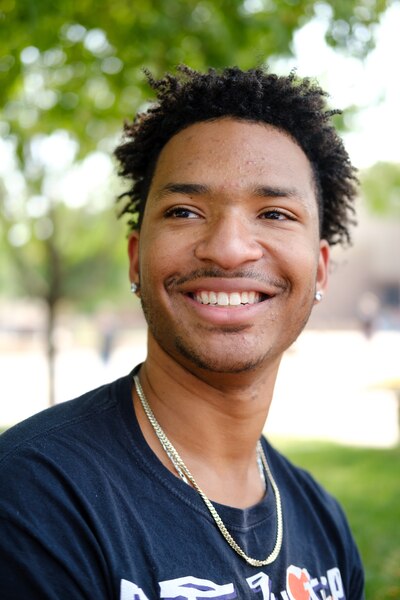A sophomore like Joshua Duran typically would know the ins and outs of Colorado State University by the start of his second year.
But as Duran helped sign up students interested in the United Men of Color student organization during this week’s Fall Student Involvement Expo, he found he didn’t know much about the Fort Collins campus.

Duran, 18, spent most of his first year at CSU in his dorm room, taking classes online due to campus COVID restrictions.
“I’m trying to get answers to questions I don’t know,” Duran said. “I’m like, ‘I can get back to you on that. I can ask a third-year.’ But I also like the feeling that I get from that connection. I like knowing that I’m not alone in not knowing stuff because we are all trying to figure this out.”
After a pandemic year, students across Colorado and the country share Duran’s struggles in figuring out a return to college life. And Colorado State University administrators share in the challenge other college leaders face trying not just to integrate those students this year, but also address the pandemic’s lasting impacts.
Administrators said that it will require plenty of patience and extra attention as students grapple with their physical health, mental health, and the impacts of isolation.
“We know students are returning to campus still in the middle of a global pandemic, which two months ago we did not imagine this is where we would be sitting,” said Leslie Taylor, vice president of enrollment and access. “We are evaluating all of our practices and our policies to make sure that we’re doing the best that we can for our students.”

To make the transition easier for students, CSU leaders extended the deadline for students to withdraw from any class without penalty. The school also made personal calls to students who didn’t register for classes to see how it could get them back on track.
CSU Orientation and Transition Programs Director Kerry Wenzler said the school also has tried to emphasize more than in previous years the physical and mental health resources on campus.
The school has required students to be vaccinated or tested regularly, as well as wear masks indoors.
The first weeks back on campus have meant more individual and small-group conversations focused on how students feel than in previous years, she said. This year’s students were more willing to talk about the toll the pandemic has played on them, Wenzler said.
She added that students have opened up about their mental health, including the anxiety they feel returning to in-person learning and the isolation they’ve felt in the last year.
Students also expressed more willingness to talk about race and culture on campus, she said, especially after last year’s George Floyd’s murder sparked deeper conversations about race.
Enrollment, counseling, and student services staff also plan to check in with students throughout the year and make it a point to ensure second-year students feel like they have a place on campus, Wenzler said.
Wenzler said administrators want students to explore and gain a sense of community. The school has even given students $15 gift cards to campus stores in the hope they find a place to interact with others.
Students have socialized and explored more slowly than any class she’s seen, she said, and that requires plenty of patience.
“This is the slowest-acting group of students we have ever seen,” Wenzler said. “We’ve needed to understand when to push and when to pull. We’ve found these students need to make the very best decision for themselves and their families given the ridiculous situation that we all find ourselves in.”

Duran said socializing with other students feels foreign.
He barely saw other students last year, let alone what the campus has to offer. The hundreds of students walking through the Lory Student Center Plaza during the expo especially felt unfamiliar, Duran said.
“Last year, I didn’t get to have a typical college experience,” he said. “It took a toll on my mental health because all we knew was doing stuff online and the inside of our dorm rooms. We didn’t get to go study in groups.”
Duran said his grades dipped and he questioned why he even went to Colorado State University.
But he’s gotten help from fellow students who want him to succeed and feel part of campus.
Junior resident assistant Joseph Adenowo, 20, joked that he’s held Duran’s hand everywhere they go. Adenowo said he didn’t expect to take on such a big role helping freshman and sophomore students integrate onto campus. Nonetheless, that’s what’s needed right now, he said.
And he knows students need his help as a leader in the United Men of Color, which has always prioritized conversations about mental health. It can be hard to be a young man of color on a majority white campus, Adenowo said.

The pandemic exposed the need to support fellow students of color even more, he said. Across the state, fewer students of color and low-income enrolled in college this year. Duran said last year he rarely saw another student of color.
Adenowo said he wants all students to know there’s a community for them.
“More than ever, we are trying to help others through good interaction and easing them into the school year,” he said. “We just let them know that there are resources here and people here that care about them.”

